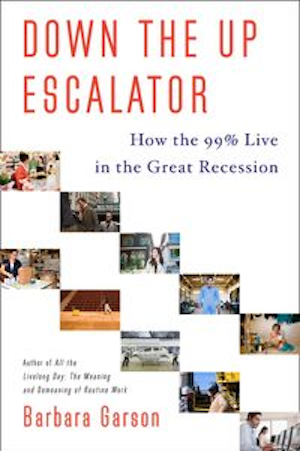Down the Up Escalator

The generation that went to Woodstock, fought with police against the Vietnam War, and later, enjoyed a “me” decade – the “Baby Boomer” generation – has taken part in transforming our economy into a system that many regard as genuinely hostile to “the people.”
Now a participant in 1960s social activism has written a book showing in sharp relief the impact of decades of downsizing and outsourcing on families and on some of the good-paying jobs that once sustained the American middle class.
“Down the Up Escalator: How the 99% Live in the Great Recession” is a three-part opus in which Barbara Garson befriends and tells the stories of people who can’t find work, people who are losing their homes, and people whose savings have evaporated. Garson, a Brooklyn native, will appear in Cobble Hill tomorrow, May 1, to celebrate the release of her book at BookCourt.
